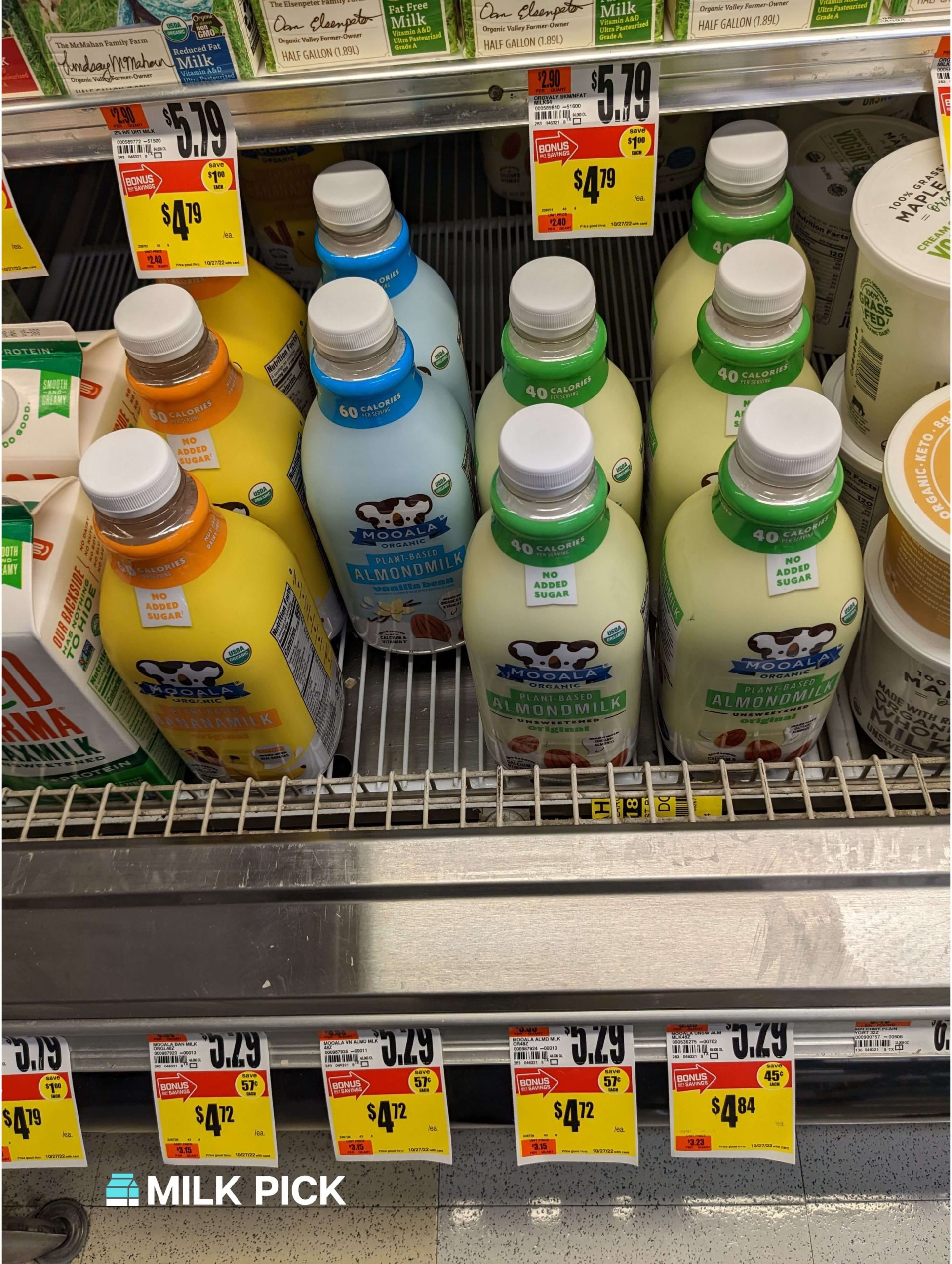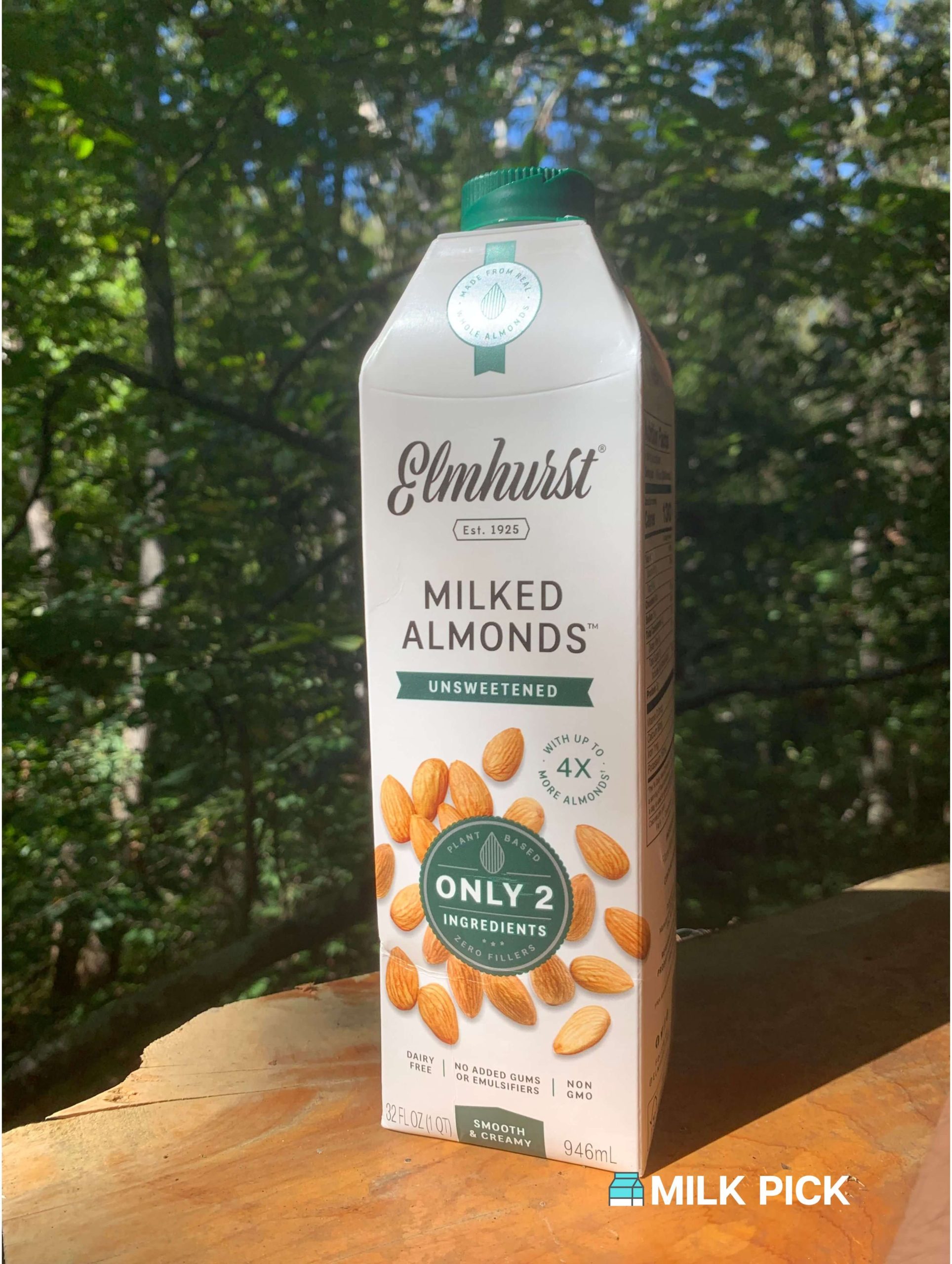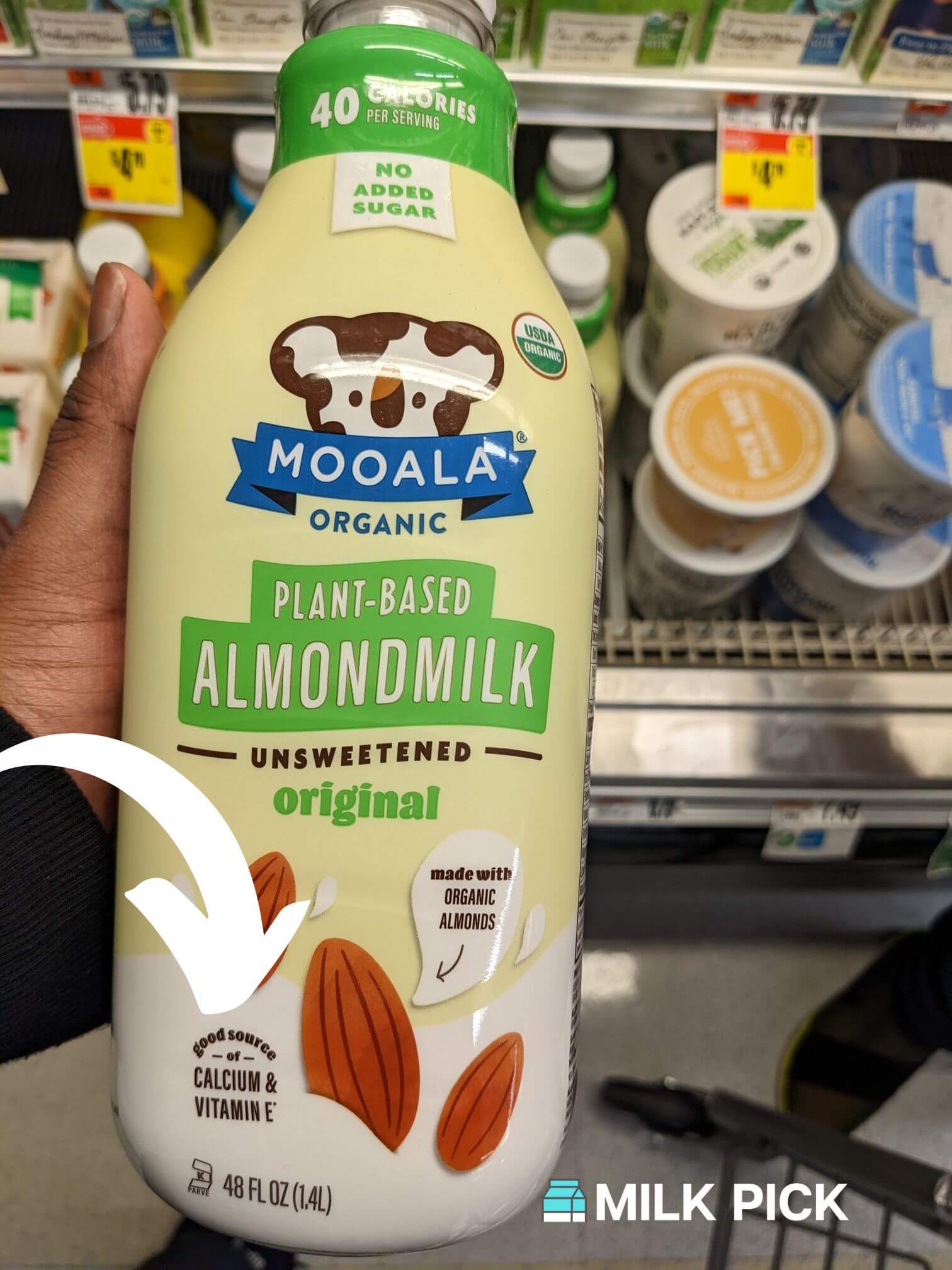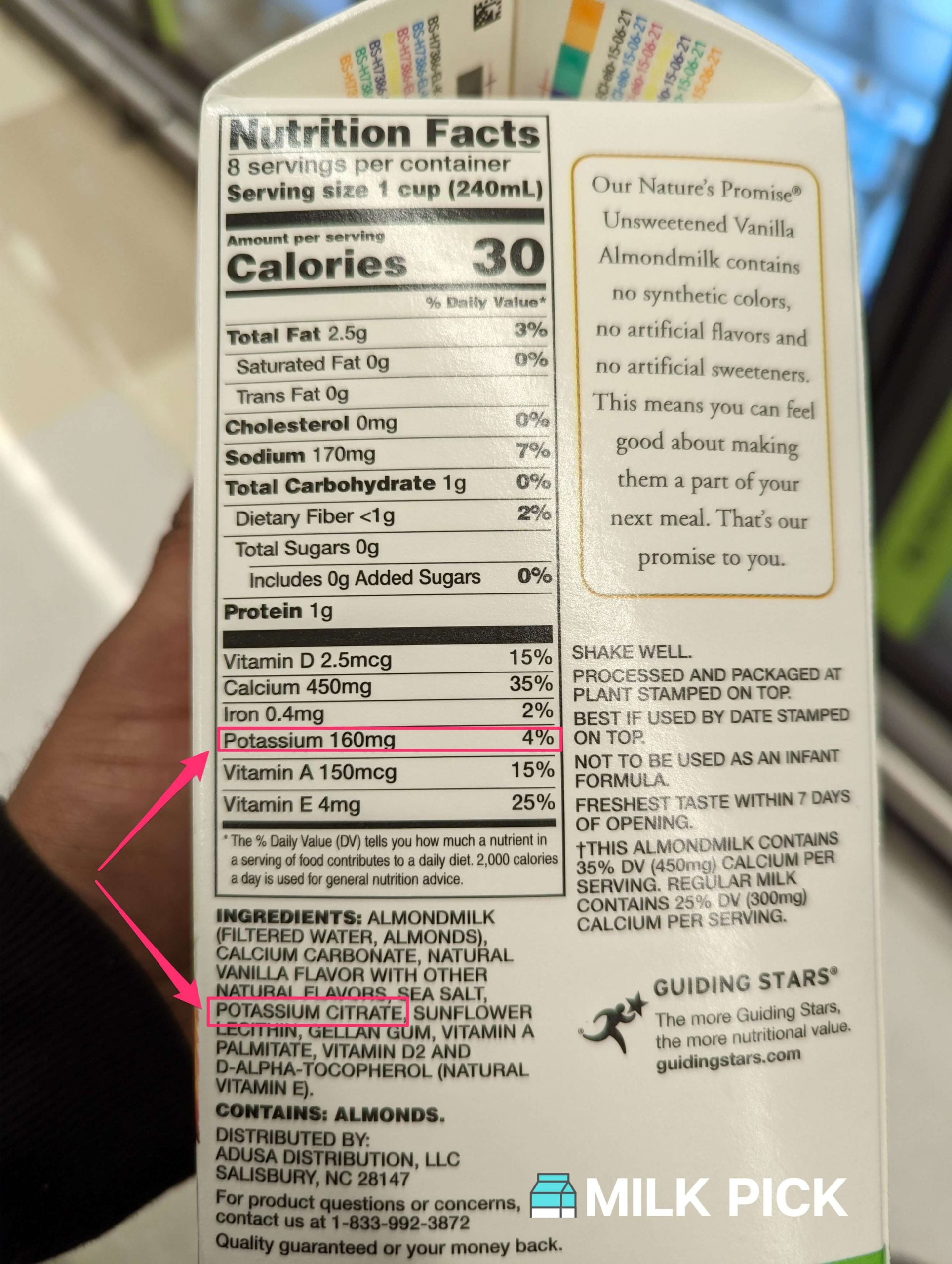Pasteurization is a process during which harmful bacteria are destroyed by heating food items, typically milk and eggs, to high heat before packaging.
Most milk products are pasteurized in the United States and in fact, the Food and Drug Administration (FDA) requires all milk sold across state lines to undergo the process.
While labeling almond milk as “milk” may be controversial for some, the beverage is considered a milk substitute.
If you regularly drink almond milk, you may wonder whether it is pasteurized like cow’s milk and, if so, what effect the process has on the plant-based drink.
Is Almond Milk Pasteurized?
While there isn’t an FDA ruling on the pasteurization of almond milk, some commercial manufacturers pasteurize their almond milk products.
The following are common methods used to pasteurize almond milk, including
- HTST
- UHT
- ESL
HTST Pasteurization
High-temperature, short-time pasteurization heats almond milk to a high temperature for a short time to kill bacteria and pathogens.
The USDA states that milk must be heated to 161 F for at least 15 seconds to be effective.
Many commercial refrigerated almond milk manufacturers use HTST pasteurization, lengthening the shelf-life of their products.
These brands last around 7 to 10 days in the fridge after opening.
Silk Almond milk states that its products use UHT pasteurization. Almond Breeze utilizes HSTS pasteurization for refrigerated products and UHT for shelf-stable products.
Brands like Mooala Milk and New Barn Organics specify that they use pasteurized almonds and flash pasteurization, which typically refers to HTST.

Elmhurst 1925 details its aseptic packaging processes, and Three Trees Organics states that they use pasteurized almonds and a flash-pasteurization process to kill bacteria before packaging its product.
UHT Pasteurization
Ultra-high temperature (UHT) pasteurization is the processed use for ultra-pasteurized milk that comes in sterile containers.
UHT heats almond milk to a higher-than-normal temperature to kill bacteria or other microorganisms that would cause it to spoil, about one to two seconds at 280F to 302F.
After UHT pasteurization, the manufacturer puts the liquid into a sterilized, aseptic container, which allows the milk to stay fresh for several months unopened.

ESL Pasteurization
Extended shelf life (ESL) pasteurization is a process that falls somewhere between HSTS and UHT.
During ESL, the milk is heated to around 158F to 176F and has a rapid heating and cooling rate of .5 seconds for every 50 to 60-degree change.
This process extends refrigerated almond milk's shelf life from 21 to 90 days.
MALK Organics is one of the only almond milk brands to adopt this process, having done so in 2021.
Unpasteurized
If you make your almond milk at home using raw almonds, you won’t have a pasteurized product.
This means homemade almond milk goes bad quicker (around 3 to 7 days in the fridge) and has a higher potential for contamination.
When making almond milk at home, pay attention to the source of the almonds you use.
All raw almonds from California must undergo steam pasteurization, making them ideal for homemade almond milk.
However, if you get your almonds from a non-U.S. source, you’ll want to ensure they are pasteurized before blending them into a tasty beverage.
You can also use an almond milk base like JOI, which uses pasteurized California almonds to create a convenient base to blend at home.
What is Pasteurization?
In the most general terms, pasteurization refers to destroying harmful microorganisms by heating a liquid to a specific temperature for a precise amount of time.
Pasteurization aims to minimize the chemical change in taste and texture of a product while still reliably removing elements that cause spoilage or disease.
Pasteurization is named after Louis Pasteur, the scientist who invented the process in 1864.
Prior to Pasteur’s achievement in the Western world, Chinese and Japanese cultures had used a similar concept to elongate the shelf-life of certain wines by exposing them to high temperatures.
Pasteur used this concept to experiment with the pasteurization of wine in the mid-1800s, and in 1886, milk was beginning to be pasteurized regularly.
In 1906, Milton Roenau enacted the first U.S. standards for pasteurization at low temperatures, which involved heating a liquid slowly to 140F for 20 minutes.
Here's a video from Joao's Lab on YouTube that explains more about why certain foods are pasteurized.
What Foods are Pasteurized in the U.S.?
In the U.S., a wide variety of foods receive pasteurization before being packaged and sold to consumers. These items typically include:
- Juice
- Eggs and egg products
- Dairy, including milk, butter, cheese, yogurt, cream
- Plant-based milk like almond, cashew, coconut, and soy milk
- Deli meat
- Some nuts like almonds and peanuts
- Flour and flour products such as cereal and bread
While it may be surprising to see foods like flour and nuts on this list, there is good reason for pasteurization.
A 2015 NPR article reported that most California almonds in the U.S. are steam-pasteurized, as required by the mandatory treatment rule passed by the USDA in 2007.
This requirement came about as the result of salmonella outbreaks traced to raw almonds in 2003 and 2004.
Although pasteurization can affect the taste and texture of raw almonds, it doesn’t alter their nutritional value.
Benefits of Pasteurization
Pasteurization offers many benefits for the safety and uniformity of food products.
Pasteurization keeps consumers safe from dangerous bacteria, ensures manufacturers follow a standard set of food safety rules and is a time-effective method for controlling disease outbreaks.
The benefits of pasteurization include:
- Eliminating harmful bacteria like listeria, salmonella, yersinia, staphylococcus, and E. coli
- Preventing outbreaks of diseases like brucellosis, tuberculosis, diphtheria, add scarlet fever
- Ensuring a longer shelf life compared to non-pastured products
- Offering a shorter processing time that is more effective for disease control
A 2022 study looked at the increasing consumption of unpasteurized milk in high-income countries.
Researchers found that in the UK, the percentage of those who reported drinking unpasteurized milk increased by 7% from 2012 to 2018.
They also discovered that unpasteurized milk caused 89.9% of outbreaks during the same period, including:
- 67.8% of campylobacter spp cases
- 12.4% E.coli outbreaks
- 9.3% of salmonella infections
For women, pasteurization is essential for minimizing health risks during pregnancy.
The FDA recommends against consuming unpasteurized foods when pregnant. The risk of ingesting listeria is particularly important, as this bacteria can cause miscarriage, illness, or death in the baby.
This means that pasteurized foods, such as almond milk, are safe for those who are pregnant or breastfeeding.
Are There Any Downsides to Pasteurization?
Pasteurizing foods has several benefits, but there are a few possible downsides.
While the reduced risk of significant foodborne illnesses typically outweighs these downsides, it’s helpful to understand how pasteurizing may change a food’s characteristics.
Less Nutritional Content
Pasteurization can affect the nutrient value of foods.
The high heat can destroy vitamins and minerals such as vitamin C and folate in pasteurized foods.
Pasteurization also breaks down proteins and enzymes, affecting the bioavailability and digestibility of certain nutrients.
For example, raw milk may contain more vitamins and minerals than pasteurized milk.
A 2022 study found that pasteurization reduced Vitamin C by around 10% and Vitamin B2 by up to 20%.
UHT pasteurization caused the most nutrient loss, with the study showing a 30% loss of Vitamin A and almost 100% loss of vitamins B6, B12, and C after a few weeks of storage.
Interestingly, the loss of vitamins in milk that used other pasteurization methods was less than 10% for Vitamin B1, 1% for B2, 5% for B6, 10% for B12, and 10% for Vitamin C.
Reduced Organoleptic Characteristics
Some people claim that pasteurization makes milk taste cooked or less fresh.
Those who have eaten raw almonds and pasteurized almonds say that the pasteurized nuts taste more crunchy and have less flavor complexity.
This could affect the final taste of almond milk since manufacturers must use pasteurized almonds for the product.
Pasteurization can also affect the texture of milk.
Heating milk causes proteins to break down and coagulate, resulting in a thick, creamy texture that some people do not prefer. Milk pasteurization can also cause a chemical reaction that darkens the color of the milk.
Those who prefer raw milk find this off-putting.
In general, HSTS and UHT processes cause most of these changes.
The emerging popularity of ESL pasteurization is because it elongates the product's shelf life but doesn’t typically affect these organoleptic characteristics.
Potential Additives or Synthetic Nutrients
Because pasteurization reduces the nutritional content of some products, manufacturers replace these elements with fortified nutrients.

Synthetic nutrients, like calcium and vitamins D, are added to the product to meet minimum nutritional standards.
While fortified nutrients are generally considered safe by the FDA, some people may be sensitive to additives such as potassium citrate or dipotassium phosphate or simply prefer getting essential nutrients from natural, bioavailable sources.

Almond Milk is Safe To Drink
The bottom line on almond milk and pasteurization is that almond milk in the U.S. is safe to consume.
All almonds sourced from California are required to undergo pasteurization, and most commercial manufacturers use some type of pasteurization process, whether it is HTST (flash pasteurization), UHT, or ESL.
Almond milk naturally contains beneficial nutrients such as calcium, protein, and healthy fats, which remain in the product after pasteurization.
This makes almond milk an excellent choice for those looking for a plant-based alternative to dairy milk.
